Quiz funnels have been around for decades, ever since IQ tests were put online that required an email address to get the results. My guest today, Ryan Levesque, is arguably the biggest innovator, if not pioneer, in quiz funnels. But this episode isn’t a deep dive into quiz funnels and how to make them work for your business. Instead, this episode is more broadly applicable, as it’s about how to achieve scale in your marketing through the use of leverage. Ryan knows first-hand how to achieve scale through leverage. He also knows the high cost of not doing so; instead, trying to hustle and grind your way to growth. Indeed, the latter approach almost killed him. Wait till you hear his wild story and his miraculous recovery. Ryan was put through an insurance company’s physical exam just at the right moment before slipping into a coma. Talk about a stroke of luck! It was divine providence, but call it what you will.
Ryan Levesque is the 6-time Inc. 5000 CEO of The ASK Method® Company, and the #1 national best-selling author of the books, Choose and Ask, the latter named by Inc. as the #1 Marketing Book of the Year. His work has been featured in the Wall Street Journal, Harvard Business Review, Forbes, Entrepreneur, and NBC News. He also co-founded bucket.io®, the world’s leading software suite for Coaches, Consultants, Course Creators and “Hybrid Experts” with over 80 million end users worldwide.
If you want to be truly inspired by a marketing show, this is the episode for you! Even if you’ve heard Ryan before on podcasts or stages, I’m sure you’re going to glean something new. So, strap in, and enjoy the ride!
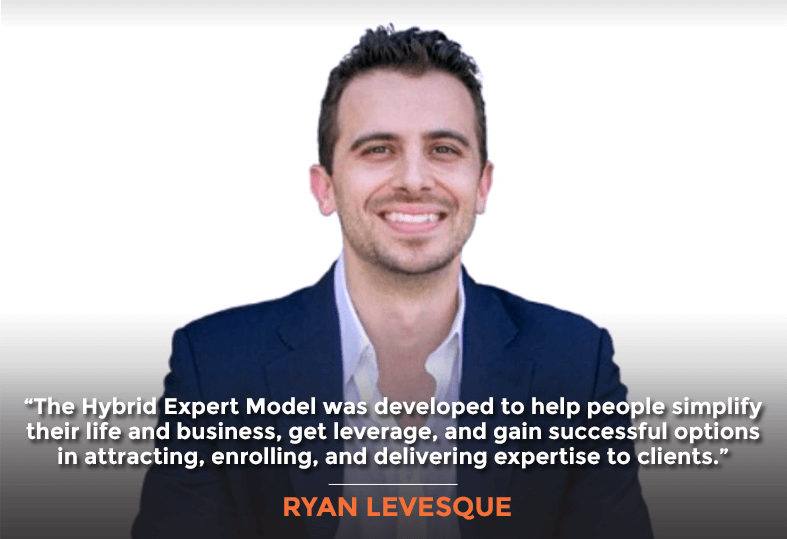
In This Episode
- [02:43] Stephan introduces Ryan Levesque, CEO of The Ask Method Company, as they discuss how to achieve scale in marketing through leverage. Ryan initially explains the importance of reframing “no” as “not this” or “not now.”
- [05:59] Ryan shares one of his impactful experiences that got him to where he is today.
- [12:02] How does bucket.io work as a marketing automation technology?
- [14:56] Ryan discusses the Hybrid Expert Model concept and its relevance in marketing.
- [27:02] How can we build a holistic approach to attracting leads and clients?
- [36:07] Why do we make decisions from a scarcity mindset?
- [42:49] Stephan explains the importance of asking God to be your business partner.
Ryan, it’s so great to have you on the show.
Stephan, it’s great to be chatting. I know we’ve been planning this and trying to make this happen for a long time.
You shared before we hit record how this was a great testament to ‘No is not yet, it’s not a no.’ Do you want to elaborate on that? I think it’s such an important lesson, not just for marketers, but for humans to go through life seeing no’s as not yet.
I learned to reframe no’s at some point in my career. No is actually not a no. There’s no such thing as a no. There’s only not this or not now. When you think about it like that, when we hear no, it feels like it can reject us as human beings. It’s very hard to take that on with our ego. But when you reframe every no that you get in business as being ‘not this,’ meaning “Yeah, the thing that you put in front of me, I’m not interested in that thing.” Or ‘not now,’ like, “The thing you’ve put in front of me is a yes or maybe, but right now, it won’t happen.”
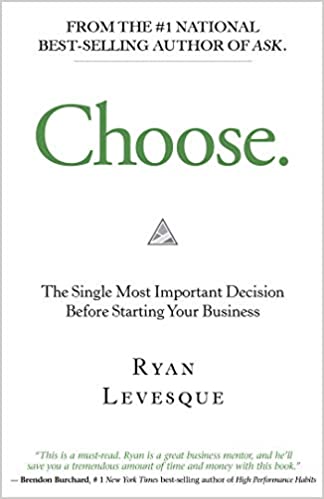
When you can get to what that answer is when someone says no, not this or not now, what it does is it opens up this whole world of possibility. You put the same thing in front of that person, maybe three months, six months, twelve months down the road, or do you have a conversation with them to find out why it is not this, and what else might it be? It’s not training, but maybe it’s the software. Or it’s not something for $1000, but maybe something for $100. Or maybe not $1000, but something for $10,000. When you can get to the truth, you get to the cash. I like to say the faster you get to the truth, the faster you get to the cash.
Right. We’ve been in conversation about doing a podcast interview for five years. It didn’t happen, but then you popped into my mind again that we never did have that podcast conversation. I reached out, the stars aligned, the Red Sea parted, and now here we are.
It was perfect. It was just a lesson, the context around it. The way that we do things in our business is I will do interviews and media-type work for a window of time. Otherwise, what happens is you have your entire year where you have no freedom if you’re doing that.
Similarly, you have a recording schedule for the same reasons because otherwise, you could be recording something every day of every week, every month, and every year for the rest of your life, and it can feel like your existence is dependent on a recording booth. Getting those two windows to align sometimes it’s not as easy as it may sound. We’ve finally been able to get them to align, and I’m very glad we did.
Me too. Let’s talk about your origin story before we get into some of the meat and potatoes of online marketing, what a hybrid expert is, how to uplevel your relationship with your constituents, understand them better, and all that good stuff. What would be the most impactful story you’d want to share about how you got to where you’re now?
A quiz funnel is a way to better understand and better serve your market and sell products. You're gathering useful intelligence so that you can understand your audience. Share on XI look at my career as being in a few different phases to get to this moment in time. A bit of my background, I grew up very working class. I was the first in my family to go to college. I studied neuroscience, East Asian studies, and Chinese studies at the Ivy League level at Brown University. I didn’t know what I wanted to do with my life, so I thought I might go to medical school, I thought I might go into business.
When I was still in college, I had an offer to work on Wall Street after graduating. I did that for a period, which was awesome and a lot of fun. I had this desire to live and work in China. I moved to China, taking the Chinese I’d spent a fair amount of my education learning. I spent about five years living and working in China in finance.
Along the way, I always had this bug to start my business, but I was afraid. I had this experience in life that I think a lot of people can identify with. I was afraid to give up the good to go after the great. I had a very good career, had a very good life. I was making a good income.
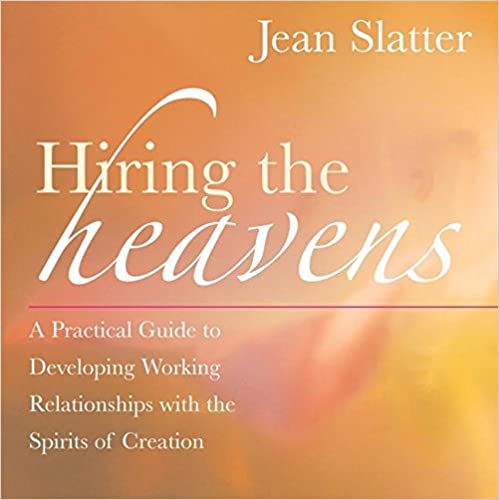
It wasn’t like I was living in a box on the side of the road or anything like that. I could see my trajectory. But at the same time, I felt like something was missing. I felt I had more to give and wasn’t living up to my potential. I felt like there was just something more to life. I didn’t know what that was, and I couldn’t quite put my finger on it.
In 2008, in the middle of the world financial crisis, I walked into my office one day, Stephan, and I had a Wall Street Journal Asia edition that was on my desk, and it said AIG, the company I was working for at the time, to file for bankruptcy. That was the headline. It was one of those moments in life where I was like, “Okay, this is the sign from the universe I’ve been waiting for.”
I called my wife and said, “Honey, go to wsj.com.” She said, “What does it mean? Are you going to lose your job?” I was like, “Look, I don’t know what’s going to happen, but I won’t stick around to find out.” This is the sign I’ve been looking for. I wrote a resignation letter, signed it, turned it into my boss’s office and gave my two weeks’ notice. I was out the door. I had no other job lined up, I had nothing, but I just had this desire to start a business.
I sold everything I owned, donated the rest, and had two suitcases. My wife was in grad school. She was going to school in Hong Kong and moved into student housing. We were in our late 20s at this point. In a 400-square-foot apartment, I started my very first business online. It was in a tiny, random, obscure niche market, teaching people to make Scrabble tile jewelry.
When you are a learner helping other learners, you only need to be one step ahead of where your audience is.
I had everyone in my life who said that I was a total moron. “What are you doing? You’re giving up everything. You’re a neuroscience person. You worked on Wall Street, investment bank, and finance. You’re giving up everything in life to sell ebooks or teach people how to make Scrabble tile jewelry on the Internet? What’s wrong with you?” People thought I’d lost my mind.
That little business, which I call a practice business, taught me the skills to build a website, send out emails, learn how to market, sell, and all these things. I went into another little niche market in the orchid care space and then into the memory improvement space to make my parents show them that I was using something with the psychology and neuroscience classes that I took in college. I was going to do something with that.
Before I knew it, I’d gone into 23 different markets, all these little random niche markets where I was selling education and expertise. Often, these were markets where I wasn’t an expert myself. I don’t have a degree in horticulture, jewelry making, or anything. But I learned that when you are a student helping other students or a learner helping other learners, you only need to be one step ahead of where your audience is. You don’t have to have a Ph.D. in the subject.
In many cases, when you are a learner on a learner’s journey, you can advise and help people in a much more meaningful way than the person who’s been an expert in that space for their entire career. It set me off on this path and this passion for building a business around education and expertise, transforming the knowledge in your brain into an income. I did that for some time, and then I developed this methodology that allowed us to be successful.
It revolved around doing this combination of surveys, quizzes, and assessments to understand a market at a deep emotional level and then use it to funnel people in different directions and build an entire business around it. You mentioned the book Ask. I wrote a book, published it, launched it, and didn’t know what to expect. It became the number one best-selling book in the country in all categories, not in a random obscure category, but it beat out Malcolm Gladwell’s book that launched the same week.
It was the spark that lit a fire that ended up setting off the company we built, The ASK Method Company, sixth-time Inc 5000 company, a software company, that is the technology for building on this. It led us to this moment right here right now today, where in our company, in our business, we serve experts, coaches, consultants, course creators, and people who are looking to build businesses, transforming their knowledge into income, using the methodology that proved to be so successful for the 23 markets that I went into.
Now, I think we’ve served between 14,000 and 15,000 clients in our business over the past decade. That’s been what we focused on for the last ten years plus, and it all started literally in a 400-square-foot apartment with nothing but a laptop and an internet connection. I think our first month in business, we made $370. We’ve taken no outside funding. We’re a self-funded bootstrap business.
We’ve taken on no outside debt to build our business and grew from $300 to $600 to $1200, and the numbers just get bigger and bigger. I think it shows what’s possible when you focus on one approach. There are a million ways to make a million dollars, and you got to pick one. You focus on one approach, and you do it with persistence and consistency.
Amazing. Congratulations on your success. You said you have 14,000 or 15,000 clients, but you also have 80 million end users of your bucket.io platform. Do you want to explain to our listeners how that works? What’s an end user? What are they doing? What value are they getting out of your software?
Bucket.io. is a marketing automation technology that takes people through some form of quiz, assessment, or survey.
That’s a great question. We have a software, and it’s called bucket.io. We built an entire company around this. It’s a marketing automation technology that takes people through some form of quiz, assessment, or survey. Imagine when someone lands on your website. I’ll give an example for your podcast. How many episodes have you done in your podcast?
Four hundred.
Okay, so you have 400 episodes. You only have one chance at a first impression. When someone lands on your website, they say, “Hey, Stephan, what episode should I listen to first?” Imagine if you had some form of assessment that was, “Hey, look, I’ve got 400 episodes of my show. If you tell me a little bit about your business, where you’re at right now, maybe what your biggest priority is, or the biggest challenge in your business, I’ll be able to direct you to the best episode or maybe collection of episodes that I think would be right for you to start with. Answer a few questions, click the button below, and I’ll see you on the other side.”
What I just described right there is an example of a quiz funnel. A quiz funnel is a way to better understand your market and sell your services or products, but also better serve at the same time. So, better sell and better serve. You’re gathering all this useful intelligence about your market, so when someone goes through this process, you can understand your audience. You can put them into buckets and say, “Oh, I’ve got these four or five themes that show up repeatedly.”
Now I can build a collection of products and programs that serve these different groups of people. You can then feed that information back into your advertising and see if you can say, “Hey, look, these people right here are great customers. Find me more people like this, taking the intelligence you’ve gathered through this technology.”
We built this technology. We’ve had over 82 million end users go through it, which means unique human beings who have gone through one of these assessments online through the technology. It’s a great marketing bragging term, but it represents 1% of humanity, which to me, was pretty cool. 1 in 100 people on the planet has gone through an assessment built through that technology online. We’ve served tens of thousands of clients using that technology in their business.

That’s what a quiz funnel is. That’s what we mean when we say end user. That’s some of the value of what a quiz funnel can provide for anyone who’s thinking about putting one in their business.
That’s so cool. I like that 1%. That’s very motivating. Now, you’ve evolved a bit. It’s not just about the quiz funnel now. It targets a certain kind of expert. I’d like you to elaborate for our listeners what this hybrid expert means and why it’s relevant to them.
Absolutely. What we’ve discovered along the way as we’ve served so many clients and businesses in this process of building out a quiz and using it as a mechanism to generate leads and clients. What we found along the way is that, as no surprise to anyone listening to this, a quiz does not equal a successful business. There’s more to a successful business online than just having one individual component.
About six years ago, we developed a program that helps people in all aspects of their business, but it was limited to just our highest-level clients that went through our quiz funnel training, went through our software, and had success and said, “All right, what else can you help within your business?” We realized that this was something that needed to get into the hands of as many people as possible.
A quiz funnel does not equal a successful business. There’s more to a successful business online than just having one individual component.
At the same time, we decided to focus our company around a specific type of business owner because it’s one thing to sell physical products through the Shopify store online. It’s another thing to be a software provider. It’s another thing to be an affiliate marketer or a coach or consultant.
We found that we had different types of businesses coming to us from all source points, all with a desire to build a quiz. After building a quiz, we were not equipped to support people in all these different types of businesses. After all, if you are a one-person consulting practice or you are a Shopify store with a thousand skews online selling hardware products like faucets, wrenches, and things like that, it would be impossible to serve both of those customers at the same time.
We decided to focus on where I have the most passion, where we have the most passion as a company, where we have the most expertise, and where we’ve had the most success. That is truly helping people we describe as experts, coaches, consultants, and other experts transform their knowledge into expertise.
What we found is that when it comes to building that type of business, there is no one-size-fits-all answer. There are so many different ways, combinations, and permutations that you can build a business around your expertise. What we started finding is that the most successful businesses are using a hybrid of a few different strategies in their business.
We developed this concept called the hybrid expert model, where you’re picking from a menu of different options of what’s most successful online in what we call the three pillars of success—attract, enroll, and deliver.
In business, you need a way to attract leads, you need a way to enroll those leads into paying clients, and you need a way to deliver your products, services, or the result – the transformation, what people are paying you for. Attract, enroll, and deliver. We developed this model to help people looking to simplify their business and life, and get leverage at the same time.
You can build a business around your expertise in many ways, combinations, and permutations.
One of the things I learned in a transition that I had early in my career when I went from a business and marketing consultant when I started working with individual companies to applying the methodology that I had success with in these random niche markets that I told you about. My first year as a consultant, I made $160,000. I thought, “Well, that’s not bad. It’s decent and a good income.”
I felt capped because I got to this point where I had 27 clients. The only way that I could make more money was if I worked more hours. One part of my story that I didn’t share is I was working so many hours, and I was burning the candle at both ends. I tell the story in my book that I ended up in the hospital. It happened in the most mysterious way.
I applied for life insurance. The life insurance application came back denied. I thought it was a mistake. I thought, “Okay, I’m a healthy man, I’m doing fine. What’s going on? I thought my results got crossed with somebody else.”
The life insurance agent, when I was on the phone with him, said, “Hey, I’m going to read you your lab results. I’m not a doctor, but I think you should see one.” I told my wife. The next day, we went to the doctor’s office and explained it to the doctor. And he said, “Okay, we’ll do a blood draw. We’ll order it stat, wait in the waiting room, and we’ll see if the results of your life insurance medical exam were a mistake or if they’re real.”
I remember it like it was yesterday. The doctor came out, grabbed me by the shoulders. She says, “Mr. Levesque, you should be in a coma. We need to rush you to the ER.”
I got rushed to the ER, and I found out that my body had slipped into a state known as diabetic ketoacidosis. My kidneys were failing, my liver was shutting down, and my pancreas had stopped working. My blood sugar levels were so elevated that I was days away, maybe even hours, from slipping into a coma.
Anyway, I had to spend ten days in ICU. I had a six-month-old baby at home. I was a new dad. It gave me time to reflect on my life, and I said, “All right, well, I got to be there for my kiddo, I got to be there for my wife, and I got to make some changes in my business because I can’t keep doing what I’m doing. It’s going to kill me.”
I shifted from working one-on-one with clients to focusing entirely on simple, scalable group programs. In that year, I went from making $160,000 in my consulting business as a consultant to the next year making $1.1 million working fewer hours, having less stress in my life, and doing it in a way that I could reach so many more people.
This hybrid expert concept was born out of that experience. It was born out of how you transition as an overworked, underpaid expert, coach, and consultant, where you’re on the roller coaster, you’re on the hamster wheel. You are working more hours than you ever thought you were going to work to be able to build a business that works around your life and not the other way around. We’ve built an entire system around that approach. Now we’ve served thousands and thousands of our clients to have success in that approach.
The hybrid expert concept was born out of the experience of how you transition as an overworked, underpaid expert, coach, and consultant, where you’re on the roller coaster or the hamster wheel.
It goes far beyond just the quiz that we started talking about and much more of a holistic approach around not only attracting leads and clients but enrolling those clients and delivering them in a way that allows you to build that business that gives you freedom and flexibility in your life.
It reminds me of what you said at the beginning of this episode about, that was the sign I’ve been looking for. It’s the sign, right?
It was a sign. I’ve learned to pay attention to those signs because they’re there. I think we sometimes ignore them. We’ll just keep forging ahead, where we’ve got a mission and a plan. We say, “All right, this is my plan, my mission.” I don’t know if it’s a wisdom that comes with a little bit of age, but I’ve learned when it’s too hard, when it’s not working, when things just aren’t clicking, often it means that I just need to take a step back, reflect on what the universe is bringing my way, and maybe there’s something even better out there that’s beyond what I’d even envisioned.
I think that’s true for all of us. I think we can all learn from that. I have very many wise mentors in my life that have slapped me across the face and said, “Ryan, you idiot, you should be thinking like that.” I’ve learned to heed that wisdom, and I’ve learned to pay attention to the signs.
Do you know who Jeff Foxworthy is, the comedian?
Yeah, of course.
Yeah. There’s your sign.
Exactly. I use it. I know we’ve been talking a little biographical and a bit philosophical here, but I’ll go tactical for a minute so your listeners have some things to take away. That is a great line to use when you are in an enrollment discussion. We talked about attracting, enrolling, deliver.
One of the things that people struggle the most with, especially experts who are not necessarily experts in sales and marketing but they have expertise in family therapy, childhood education, health, or just some other discipline of life that’s not sales and marketing, is they struggle with enrollment. We all do.
This is a great line to use in the enrollment conversations you have with people. “If you’re looking for a sign to say yes, this is right here.” We can borrow that from Jeff Foxworthy and use it in our sales or enrollment conversations. “If you’re looking for a sign, this right here is the sign that you’ve been looking for from the universe, God, or the higher power or being that you are waiting to hear from.”
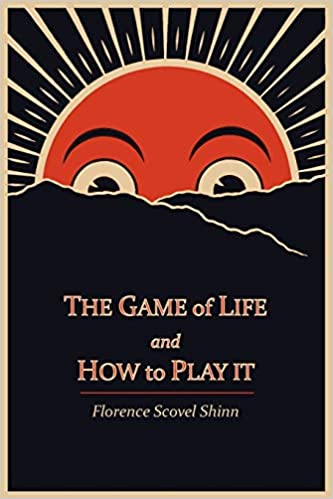
Amazing. I was just doing an interview earlier today. We were talking about signs. Either everything’s a sign, or nothing’s a sign. For somebody who’s very materialistic, nothing’s a sign. But for somebody who’s seeing the magic and the miracles, everything’s a sign. Whether it’s, a butterfly out the window or a certain number on the road sign passed 65 miles an hour. None of this is random. It’s pretty miraculous.
It’s a choice. We all get to make that choice, which is so powerful. You get to choose if you’re going to interpret that experience that you’re having that we call life and the collection of elements that get thrown your way as being a sign or as being nothing but random noise. You get to choose, which is so empowering.
It’s not to say that there’s a better choice or a worse choice. Who are you or I to pass moral judgment on that? What’s so empowering is that we get to choose, that we get to decide how we interpret those life moments.
There’s a great book series about the power to choose for kids. It’s What Should Danny Do? I read these to my three-year-old son, and he gets to choose. “Do I have a tantrum right now?” The younger brother spilled cereal. “Do I have a tantrum, or do I tell the younger brother, it’s okay, don’t do that again?”
When my son chooses one choice, I turn to that page, and the story continues to evolve or unfold. He’s also curious to see what would happen if he made the other choice. It’s like a choose-your-own-adventure series but for little kids.
What’s so empowering is that we get to choose and decide how we interpret our life moments.
The power to choose is the best. This kid has a superhero cape. It’s all about the power to choose to be his biggest, best superpower, not his ability to jump, to have X-ray vision, or any of the other stuff. It’s really cool. That power of free will, of making choices, it’s what this whole video game called life is about.
I can’t believe I’m not familiar with that book series. 23,000 ratings on Amazon. I’m just looking it up right now, with a 4.8-star review. My kiddos are a little bit older now. But if I could go back in time, that might be one that I pull off the bookshelf. There’s a tip for all the parents here with young kiddos, probably worth looking at.
For little older kids, I do recommend The Little Soul and the Sun by Neale Donald Walsch. That is an amazing children’s book. I have adult kids, too. I read this to one of my adult kids. She was in a dark place at that moment. I thought that book would help her, and it did. I read it to her over FaceTime.
Anyway, back to the practicalities of marketing. If our listener is an expert, they want to get off of the hamster wheel of more hours to get more dollars, and they want to do that jump at $160,000 to $1.1 million that you achieved, but they have different numbers, of course, what is the first step for them to take?
As I mentioned before, there are a million ways to make a million dollars. You got to pick one, and you got to go all in. It’s not enough. Half measures will not get you to where you want to go. You’ve got to put blinders on to everything else, focus on one approach, and give 100% of yourself to that.
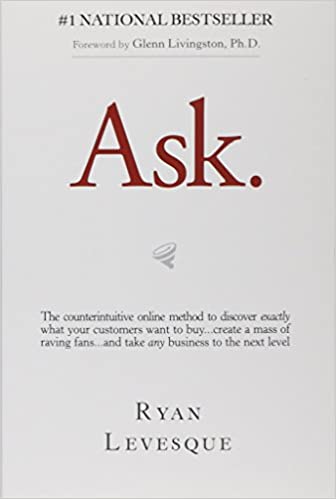
What I’ve learned is that you just need one way to attract, one way to enroll, and one way to deliver. The way that I made that transition from $160,000 to $1.1 million in less than a year was by selling one thing. I just sold that same thing. I did it every single week, I did it with consistency, and I did it with a focus on continuous improvement, incremental improvement every week, and trying to make things a little bit better. 1% better today, 1% better tomorrow.
The first approach, the first step to the process before you can build your attraction funnel, your enrollment presentation, and your delivery program, is you’ve got to do a step before that we call design. You’ve got to design three things: your message, your offer, and your model. You’ve got to begin with the end in mind.
One of the things that I found is that when you are an expert, there’s this predictable path that we all go through. Before you start your business, you’re in what we call the B box, B stands for bright-eyed and bushy-tailed. You’re super excited. You think, “Oh, this is going to be amazing, I’m going to start my business.” You have these dreams and these visions of what things will look like, and then you make the first of two transitions.
The first transition, we call the leap. You leap. You decide, “All right, I’m going to do this, I’m going to start this thing.” It could be a side hustle. You could do what I did. I left my career and started brand new. Or maybe somewhere in between. You leap, and you think you’re going to get to the place that you want to get to. Instead, you land in what we call the T-box.
The T-box means tired and trapped, and I found myself in the hospital bed. I had created a business in which I was a prisoner. I have a mentor that once told me. He said, “Ryan, we’re all responsible for building the prisons that we are inside of right now. We’re all inside some form of prison.”
There are a million ways to make a million dollars. You got to pick one, and you got to go all in.
If you think about your life, you have created a prison for yourself with the choices and decisions that you’ve made, whatever that is. Where you’re living, maybe responsibilities and obligations that you have in your life, certain choices that you’ve made that have led you to this moment in time right now, these are the total of where we’re at. But the good news is, there’s a key, and you can get yourself out of that prison.
You can get to a place we call the F-box, freedom and flexibility by making the second transition. The second transition, we call this the switch. The switch is by reorienting everything you do in your business around one word.
The word is leverage. When I say leverage, I mean leverage in this context is decoupling your income from your time. The expert’s trap is that we have this expertise, and we get caught in this time-for-money trap. You’re consulting. You work with your clients. They want you. You get paid an hourly rate for the work that you do. The only way to make more money is to work more hours or hire more clients.
What I learned about the power of the switch of shifting from one-on-one client work to scalable, simple group programs is this incredibly powerful math equation. It looks like this. Imagine that you are making $100 an hour. Let’s say you are working with clients one-on-one. You say, “All right, I want to make more money.” What do you do? You work more hours.
You’re working ten hours a week, making $100 an hour, and you scale that to twenty hours, then thirty hours, and then forty hours. What happens is you run out of hours. You either hit the ceiling and can’t increase your income, or you’ve only got one choice, and that choice is to raise your rate. But in every market, there is a price ceiling to what you can charge for the work you do one-on-one. You will reach the ceiling, and then you won’t be able to break through it. That will be your ceiling in your income.

Let’s look at another paradigm. Instead of charging $100 an hour to work with people one-on-one, and you’re working with people in some type of group format, call it a group program. You might not be able to charge $100 an hour for working with people in a group setting, but maybe you could charge $50 an hour. If you’ve got a group of two people, you’re making the same amount of money that you would be working with people one at a time.
Let’s say you scale that to four people paying you $50 an hour. Now instead of making $100 an hour, you’re making $200 an hour. You scale that to ten people. Now instead of making $100 an hour, you’re making $1000 an hour.
When you do the math like this, and you look at how you scale down the one-on-one work that you’re doing and scale up the group work, there becomes this tipping point where it’s not about making the shift overnight. It’s not about saying, “All right, and I’m going to fire all my clients, then launch an online course,” and then hope that everything goes well. It’s doing it in an incremental systematic way, whereby you get rid of your worst clients.
Think about if you’re listening to this right now, the client that is giving you the most problems, the person in your life, you’re like, “Oh, man, I don’t want to deal with that person anymore.” We all have these people in our lives. These people serve a purpose. They teach us grace, courtesy, and patience. They’re there for a reason, and they’re there so we can tell stories over a drink, beverage, or a cup of coffee one of these days. You scale down the one-on-one work, and you scale up the group work.
Worst clients teach us grace, courtesy, and patience. They’re there for a reason, and they’re there so we can tell stories over a cup of coffee.
Here’s the dynamic. Let’s say you are working forty hours a week, and twenty hours of the forty hours, half of your time is with one-on-one clients, and then twenty hours is with group clients. Let’s say you are making $5000 a month working with clients one-on-one, $5000 a month in a group program, so $10,000 in total. And you decide that you’re going to scale your one-on-one work down in half.
You will go from twenty hours a week to ten hours a week. You’re going to scale up the number of group clients you take on in your group program to offset that loss in income, but the cool thing is you’re not working any extra hours. You’re still working twenty hours. But now, instead of twenty hours one-on-one and twenty hours group, you got twenty hours group and ten hours one-on-one. You’ve just given yourself an extra ten hours a week of your life simply by shifting from one-on-one to group work.
When you do the math, ten hours a week is about 520 hours a year. And 520 hours a year is about 21 days. The way I like to look at it is, what are you doing with those extra 21 days that you just bought yourself? Are you going on a three-week vacation? Are you spending those 21 days at the beach, in the mountains, at the lake with your kiddos, with your adult kiddos, and with your grand kiddos? What do you do with those 21 days?
This incremental switch is the hybrid expert model because you’re doing the hybrid of several different things. You’re not discarding what’s worked to get you to this point, but you are making some subtle shifts in your business and your life that are all designed around leverage.
I advise people to write that word in all capital letters and put it on a post-it note, a place on their office or whiteboard. Write that word down. I’m talking about the power of choice. “Is the choice I’m making right now giving me more leverage in my business or less?” There’s no such thing as standing still. Every choice you make moves you forward or backward on the spectrum.
When you think about that dichotomy, it’s very powerful when you ask yourself that question introspectively, and you say, “Is this giving me more or less leverage in my life?” It’s a powerful rubric to use.
Everything revolves around that word, leverage. When you rethink and reframe your business around that concept, then what it does is it puts every decision that you make through a certain level of scrutiny and the lens of, “Is this going to help me build a business that provides freedom, flexibility, and fulfillment for my life?” Or, “Is it me putting myself back in the prison of feeling tired and trapped and having a business that controls my life instead of the other way around?” As we were talking about earlier, the cool thing is we all get to make a choice. We get to choose what we do in our business.
Some of the reasons why we have a scarcity mindset is because we don’t see a viable alternative.
And if you’re coming at it from a scarcity mindset, you won’t fire your bad-fit clients because you’ll imagine that that revenue will not get replaced.
I think that’s true. Some of the reasons why we make decisions like that is because we don’t see a viable alternative. I’ve been here myself. I’m just a learner helping other learners, so I don’t want anyone to feel like or interpret what I’m saying that this guy is claiming he’s got it all figured out. I’ve made many mistakes and have the war injuries to prove it. True, actually, biological injuries.
The punch line to my health story is I, as an adult, had an autoimmune response that was so severe. My body attacked my pancreas to the point that it no longer works. Now I am on an artificial pancreas. I have an artificial insulin pump attached to my body in a sensor.
It all stems from the fact that I pushed it too hard. I burned the candle on both ends. I was pushing it hard in business, I was pushing it hard in life, and then my wife had a baby. I had a six-month-old at home, and I wasn’t sleeping, that was the straw that broke the camel’s back, and I just couldn’t do it anymore. I see so many people who have had some version of that experience, their version of I can’t do this anymore.
To your point about scarcity and abundance, I think one of the reasons why we are afraid and so much of what we do in life is fear-based. If I think about the reason why I worked so hard in school, in part because I wanted to succeed, but it was a fear of getting Bs and Cs. I was afraid of failing. My life would just be this abject failure.
We do a lot of things based on fear. But I think one of the reasons why we’re afraid to leave those clients we don’t enjoy working with is because we don’t see a clear, viable alternative. But when we have that alternative, and we see that there’s a path to get there, it looks like this—attract, enroll, deliver. One way to attract, one way to enroll, one way to deliver.
Deliver, you switch from clients to cohorts. Instead of thinking in terms of one client at a time, think in terms of cohorts. It’s a group of people that I’m going to be serving.
To design a business that works around your life, you need a message, offer, and model that supports it.
On the enroll side of the equation, instead of thinking in terms of conversations, one-on-one sales conversations that you might have, think in terms of presentations. How do we speak to people in a group setting?
On the attracting side of the equation, instead of thinking about context, like who could I meet who might be able to be a client, think in terms of crowds. What is a crowd of people that I might be able to connect with and speak to? Even in this conversation, this is the meta-learning, the meta takeaway is this is a perfect example of a crowd. There are so many different platforms, events, and opportunities to share your message with people in a group setting that gives you more leverage.
Yes, it is a scarcity-abundance thing, and yes, it requires having clarity of path—attract, enroll, deliver—and then getting started to answer the original question you asked before I got off on this tangent here. To design a business that works around your life, you need a message, offer, and model that supports it.
Your message should come from your market, not from your mind. That’s lesson number one. What do I mean by that? Don’t get caught up in marketing buzz speak or put pressure on yourself to have to figure out exactly what to say in your marketing. If you learn to listen and pay attention to the natural language that is emanating from your market, it becomes as simple as echoing that back to the people who have expressed that.
When you create this reaction in people’s brains, where they say, “Oh, my goodness, it’s like she or he can better understand what’s going on in my life than even I can even better describe it myself, the only question people have after that experience is, what should I do about it? What’s my next step?” That’s the message piece. The message should come from your market, not from your mind.
Offer. It needs to be an irresistible offer. This is where a lot of people fall short. You can’t just put something out there and say, “Oh, buy my thing or whatever.” It needs to be an offer so good that it creates the reaction where people want to throw their credit card at you, like take my money already. You need to just take my money offer. The beautiful thing is, it might feel like that’s magic, but there’s a systematic way to engineer that response in people’s brains.
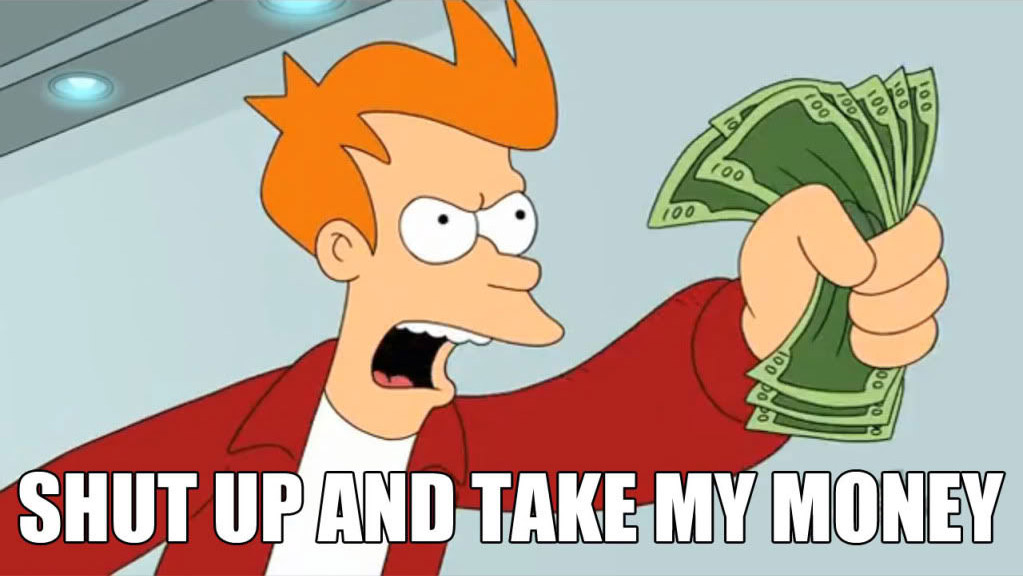
So the message, check, offer, check. Model, here you want to emulate before you innovate. Don’t try to say, “Okay, here’s what I will do. I’m going to go, and I’m going to take people from this step to that step and this step and that step.” Don’t try to invent or reinvent the wheel.
I have a mentor who once taught me this expression that’s always stuck with me. He said, “Ryan, pioneers get shot, settlers get rich. Be the settler, not the pioneer. Don’t try to create something new. Instead, find something that is working.” Find a proven systematic approach, someone who’s walked the path a thousand times, who’s figured it out, who’s made all the mistakes, and all you need to do is just focus on executing those steps.
Instead of being the first to try to climb to the top of the mountain, blazing a trail, follow the path. Because if you put one step in front of the other, you will reach the summit. It’s just a matter of doing the work, putting the time, effort, energy, and in some cases, money into that direction.
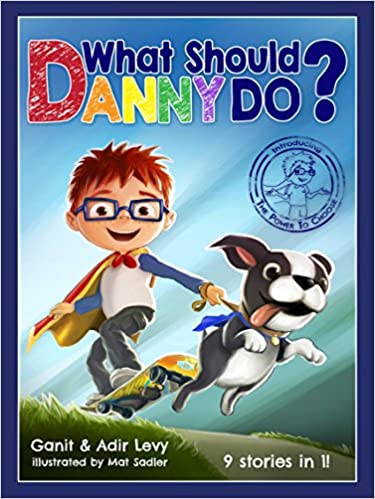
That’s what I’d say as far as the next immediate steps, attract, enroll, and deliver. Focus on your message, offer, and model. It all begins, I think, with the belief that there is an alternative path that might be different from the approach that you might be taking right now.
Wow, that’s great stuff. One thing that popped into my mind when you were talking about the bad fit client and then firing that person is my friend, Joe Polish. You probably know him.
Literally, this is so ironic. I’m talking to Joe hours ago before this conversation.
There are no coincidences.
This is a sign. It’s one of the signs.
Yeah, pretty amazing. He says, “Some people are in your life just to be a bad example.” If you look at this client who was never a good fit, they’re just hard work, and you’ve been getting in life what you’ve been tolerating, which is a lot of pain from this particular client or maybe from a group of these folks, it’s a choice, as you say, but it’s also a setup. It’s a divine setup for you to take action.
If you don’t take action, if you’re willing to tolerate this bad-fit client, then the heat will be turned up on you. You can wait until it gets very uncomfortable, or you could just go ahead and take massive action and do what you’re supposed to do.
Sometimes we need a crisis or acute pain to create sufficient motivation for change. I love that perspective that some people are in your life just to set a bad example. Brilliant.
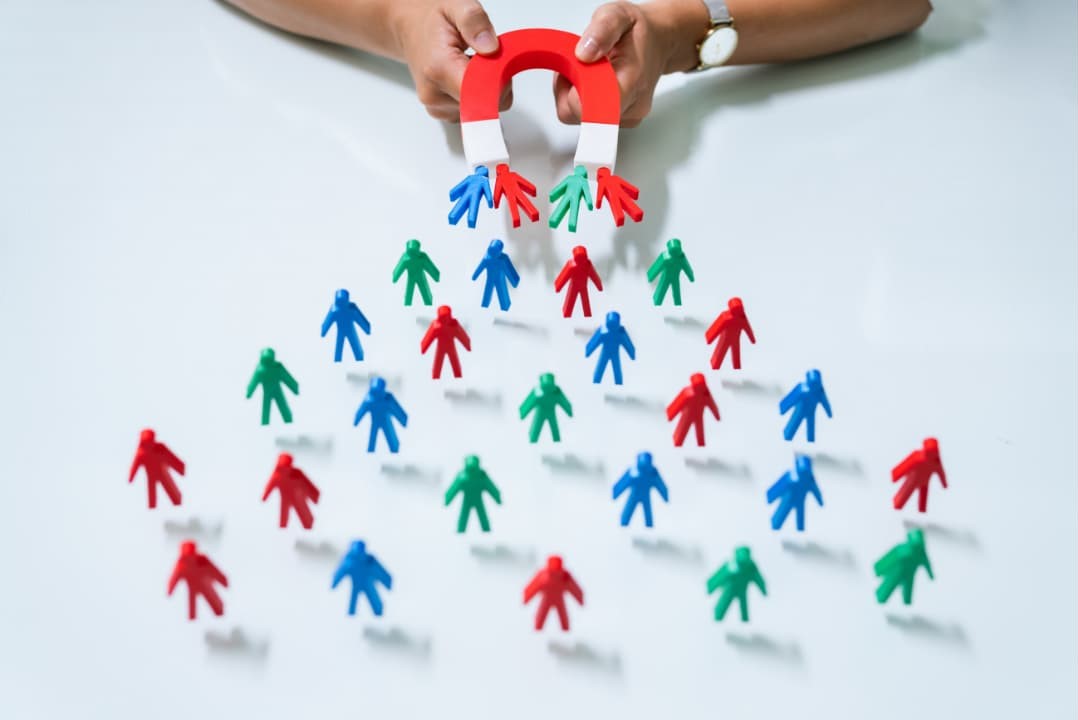
There’s another thing that popped into my mind while you were talking. It’s pretty metaphysical. It’s this idea that everything is co-created in your life, not created by you, but co-created by you. You’re doing this in partnership with the Creator, your angels, and your unseen support team.
There’s a great book called Hiring the Heavens by Jean Slatter. It talks about how you can engage your angelic assistance in business planning, prospecting, and removing blockages and things preventing the sale from closing. It’s very powerful because the unseen world is more real than the seen world.
If you’re willing to suspend your disbelief and take this idea on board that things are happening in the upper worlds or the unseen, behind the veil, and that this is all designed purposefully, perfectly, and with precision, then you can, for example, ask God to be your business partner as Kurtis Lee Thomas did, who was a guest on my other podcast. He’s a smart guy and a breathwork hybrid expert. He’s figured out that the group model does really well with it.
Reframe your business around the concept of leverage. It puts you through the lens of building a business that provides freedom, flexibility, and fulfillment. Share on XHe had a huge shift in his business. It all happened when a friend of his was saying how God is his business partner. It’s like, how do I do that? I wanted God to be my business partner, and he did. Life became so much easier because you could go through somebody’s model or framework with no faith, or you could go through it with no fear.
Fear is inverse faith. I learned that from the book The Game of Life and How to Play It by Florence Scovel Shinn from a hundred years ago. Amazing book. She saw the matrix a hundred years ago.
Anyway, if you’re so inclined to ask God to be your business partner, he says yes, and then clients show up at your door, and you don’t have to do the hard slog anymore. It’s not just about doing the model. It’s about having faith.
For example, I used to attend a lot of conferences. We met at the Traffic and Conversion Summit. I haven’t been there for years, and you haven’t been there. Why not? Because we don’t need to be. Neither of us needs to go to that show or umpteen number of other shows to get enough business to grow our footprint.
That’s something I’ve been so grateful for because I used to be on the road a lot, two or three times a month, speaking at conferences and different kinds of networking events and things, and it was exhausting. But my wife went with me, and it was fun. We have a three-year-old now. She doesn’t travel because then we’d be bringing our three-year-old. It’s a lot more hassle.
Consequently, it doesn’t fit with my lifestyle and what I want to achieve for me to be on the road all the time anymore, and I don’t have to be. Those clients are coming from elsewhere. Some of them are coming from such a clear message talking about signs. I do not doubt it was dropped on my lap, like mana coming down from heaven. I didn’t have to apply a framework or a model. Not to say that that’s not helpful, but one without the other doesn’t get you where you want to go.
It’s a very powerful perspective and way of thinking. There’s something that you said that reminded me of something that I’ve always held, which is the idea that constraints breed creativity. When you have a constraint in your life and you prioritize certain things, solutions that you may not have envisioned or thought about will present themselves.
Every market has a price ceiling to what you can charge for the work you do one-on-one. You will reach the ceiling, and then you won't be able to break through it. So, scale down the one-on-one work and scale up the group work. Share on XWhen your constraint is “I am not traveling because of XYZ reason,” then what happens is you start to see opportunities and possibilities in ways that you didn’t even see before. I think it’s an interesting, almost flip side of the coin: enlisting the support of the universe or a higher power in your journey, calling and listening to that. It’s there.
I know it’s metaphysical here, but it’s about almost opening up the part of you that can experience that and let yourself be open to that possibility. Whatever your belief system is, I think one thing that I hope that we can all agree on is that there are certain things and phenomena in life that we can’t explain. There are certain things that we could not explain 10 years ago, 100 years ago, or 1000 years ago that we now have explanations for.
If you believe that to be true, there are certain things that we could not explain, then. Therefore there are still things that we don’t have a way to explain now that perhaps in time, we may be able to have an explanation for. If you leave yourself open to the possibility that there are certain forces in nature, in life, and in the universe that we don’t quite fully comprehend,explain, document, and appreciate, and you leave yourself open to the possibility that you choose to believe that there is a way that that can support you. And then you couple that with the constraints that you’ve laid down for yourself, in your life, and prioritize this is what’s most important to me, then you can truly build a business that allows you to achieve everything that you hope to achieve and much more. That’s why I choose to believe that that’s possible.
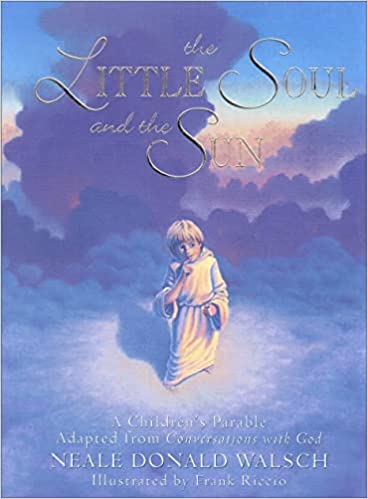
Absolutely. Amazing. I’m excited for our listeners to hear this message and for them to apply it in their lives because this podcast isn’t about entertainment. It’s not about edutainment. It’s not passive listening pleasure. This allows people to reveal more light and make a bigger impact. I hope they take what you’ve shared, the wisdom, your great stories and experience, and apply it in their lives.
Stephan, it has been an absolute pleasure. As I reflect on our conversation here today and the fact that this was probably five years in the making, maybe there was some infinite wisdom in the universe that took us to this point in time to have this conversation. Now is the right time.
What we co-created here today, in partnership with everyone listening to this and watching this right now, is something that, hopefully, we’ll be able to have a positive impact on the world. With that being said, it’s been an absolute honor and a pleasure, very grateful for the opportunity. I hope it’s not five years between now and the next time we have a chance.
Likewise, if our listener wants to learn more, work with your company, and all that good stuff, where do they go?
A great next place to go is hybridexpert.com. It will take you to our website. You get to learn more about what we do and how things work. If you’re interested in any of what we talked about here today, go to that page. You can learn about the different ways that you can work with us. We have several different opportunities, including some free ways to just go deeper and learn more about what we talked about here today and take the next step.
Awesome. Thank you so much, Ryan, and thank you, listener. We’ll catch you on the next episode. I’m your host, Stephan Spencer, signing off.
Important Links
Connect with Ryan Levesque
App/Tool
Books
Businesses/Organizations
People
Previous Get Yourself Optimized Episode
YouTube Videos
Your Checklist of Actions to Take










About Ryan Levesque
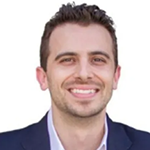 Ryan Levesque is the 6-time Inc. 5000 CEO of The ASK Method® Company and the #1 national best-selling author of the books Choose and Ask, the latter named by Inc. as the #1 Marketing Book of the Year. His work has been featured in the Wall Street Journal, Harvard Business Review, Forbes, Entrepreneur, and NBC News. He also co-founded bucket.io®, the world’s leading software suite for Coaches, Consultants, Course Creators and “Hybrid Experts” with over 80 million end users worldwide.
Ryan Levesque is the 6-time Inc. 5000 CEO of The ASK Method® Company and the #1 national best-selling author of the books Choose and Ask, the latter named by Inc. as the #1 Marketing Book of the Year. His work has been featured in the Wall Street Journal, Harvard Business Review, Forbes, Entrepreneur, and NBC News. He also co-founded bucket.io®, the world’s leading software suite for Coaches, Consultants, Course Creators and “Hybrid Experts” with over 80 million end users worldwide.







Leave a Reply